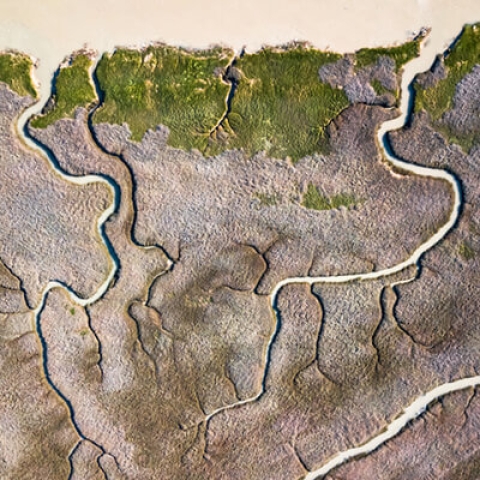
Sidebar navigation

Analysing fine and coarse grained soils
Location: Burnaby Building
The Geotechnics Laboratory is also known as the Soils Lab. It has fully automated testing equipment and kit for characterising fine- and coarse-grained soils. And has a 60-seat area for interactive tutorials. The lab is used for teaching soil geotechnics, student projects and research.
Students use the lab on courses including BEng (Hons) Civil Engineering, BEng (Hons) Construction Engineering Management, and MSc Engineering Geology and Geotechnics.
The lab is also used by PhD candidates. One of our postgraduate researchers currently using the lab is studying the effects of road-splash on mud brick homes in West Africa.
Mud bricks keep inside spaces cool in the day and insulated at night, and are cheaper and more environmentally friendly than fired bricks. But they can suffer from water erosion, and swelling and shrinkage in extreme weather.
Explore our Geotechnics Laboratory
Soil and ground facilities
The Geotechnics lab hosts fully automated testing equipment and kit for characterising fine and coarse grained soils.
If you are thinking about the soil and the soil mechanic, the load of the house needs to transfer into the ground. So the structural element, which helps you to transfer the load of the structure into the ground, is a foundation.
We are going to teach you how you should design the foundation and everything, so you should know about the soil parameters.
In the first year of your study, I'm going to talk about the different types of soil, the soil classification, and also how we are going to take a sample from the site and doing some sieve analysis, classify the soil as a coarse material and defined soil. So this is the basic stuff that you need to know about the soil mechanics.
So when you are starting your second year of your study, you have a chance to do more experimental tests, doing some probability tests. You are going to do some odometer tests or the direct share to figure out what is the soil behaviour when you are checking the bearing capacity of the foundation, or what is this soil behaviour when you are loading or unloading.
When you are starting your third year of your study, you have a better idea about the soil mechanic, so you are going to do more traxial tests using the GDS test. And also we are going to teach you some numerical modelling because when you are graduating, you should have a nice CV.
As part of your final year, you have a chance to do some research work which will help you to become independent in the research. If you're thinking about the great material that we have, which is improving the tension of the soil, we can see that the soil particle is moving between the descript and this information is very important for the manufacture to find out what is the best shape of the descript or what is the best shape of this apparatus.
So this is a type of research that you are able and you have a chance to do, as a final project.
I hope I see all of you here in the future.
Equipment and amenities
- Liquid limit drop cones
- 300mm and 200mm sieves
- Compaction and CBR test equipment
- Constant head and falling head permeameters
- Direct shear boxes (60x60mm and 100x100mm)
- Hydraulic shear box (300x300mm)
- One-dimensional consolidation test cells (75mm)
- Triaxial test rigs capable of testing a range of sample diameters from 38mm to 100mm
Related facilities
Environmental Technology Field Station
Conduct tests and analyse samples currently in the ecosystem in a fully-operational waterworks in nearby Petersfield complete with microbiology and environmental chemistry labs.

Environmental Technology Laboratory
This lab hosts all the facilities you need to conduct simple water tests for biochemical oxygen demand to suspended solids, nutrient analysis, pH and conductivity.

Geochemistry Laboratory
Trace Earth and environmental processes in this lab, using techniques including palynology processing – the study of strewn particles – for acid dissolutions of rock matrices, sample sieving and heavy liquid separation.

Where to find us
Geotechnics Laboratory
Burnaby Building 1.01,
Burnaby Road,
Portsmouth,
PO1 3QL



